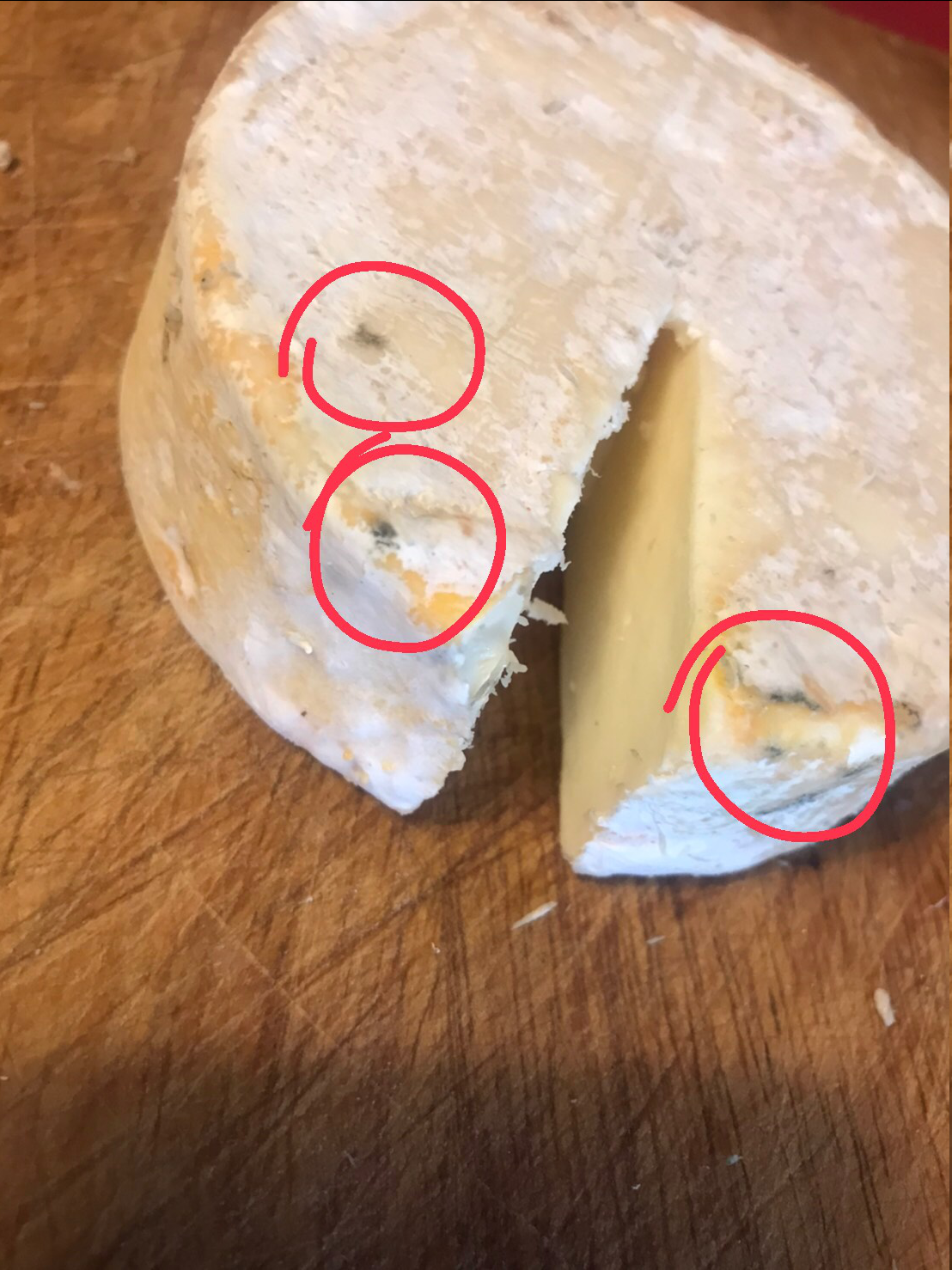Hello!
I'm amateur cheese maker and produce cheese using a modified Stracchino recipe, though I ripen it longer, aiming at creating a thin layer of tasty mold on the outside.
Problem: as my geotrichum develops slowly, other molds colonize my cheese:
Recipe:
I have a retrofitted top-down freezer with a temp and humidity controller. The Temperature is at 13C on average and Humidity at 90% on average. There's a mini-fan running 24/7 inside the cave to create some air circulation. Cheese wheels are placed on sushi mats, preliminarily cleaned, boiled and bathed in vinegar water. The mats rest on wooden shelves, stacked inside the cave. The cave is thoroughly washed before each new batch, and sanitized with a StarSan solution. The excess water in early days is drained.
So that's it. I don't know what to do. Honestly the two molds looks scary but they smell and taste good (I know this may freak out some of you). Anyway, I've survived them for more than a year now, but I want to be able to make proper cheese with the mold I decided would grow.
I thought of replacing the sushi mats with plastic or plasticized metal grids. But traditionally, we make age cheese on wooden boards, and cheese has been around long before plastic. So surely there's a way?


I'm amateur cheese maker and produce cheese using a modified Stracchino recipe, though I ripen it longer, aiming at creating a thin layer of tasty mold on the outside.
Problem: as my geotrichum develops slowly, other molds colonize my cheese:
- a thinly spreading orange mold
- buds of blue fluffy mold
Recipe:
- Raw cow's milk
- Home made yogurt as starter culture
- Geotrichum Candidum
- Vegetable Rennet
- After curd is prepared in medium-sized cubes, it is drained in perforated plastic cheese cups
- Left to drain overnight
- Placed in cheese cave the next morning
- Salted on the 3rd day
- Flipped every day for 3 to 4 weeks.
I have a retrofitted top-down freezer with a temp and humidity controller. The Temperature is at 13C on average and Humidity at 90% on average. There's a mini-fan running 24/7 inside the cave to create some air circulation. Cheese wheels are placed on sushi mats, preliminarily cleaned, boiled and bathed in vinegar water. The mats rest on wooden shelves, stacked inside the cave. The cave is thoroughly washed before each new batch, and sanitized with a StarSan solution. The excess water in early days is drained.
So that's it. I don't know what to do. Honestly the two molds looks scary but they smell and taste good (I know this may freak out some of you). Anyway, I've survived them for more than a year now, but I want to be able to make proper cheese with the mold I decided would grow.
I thought of replacing the sushi mats with plastic or plasticized metal grids. But traditionally, we make age cheese on wooden boards, and cheese has been around long before plastic. So surely there's a way?
















![Craft A Brew - Safale S-04 Dry Yeast - Fermentis - English Ale Dry Yeast - For English and American Ales and Hard Apple Ciders - Ingredients for Home Brewing - Beer Making Supplies - [1 Pack]](https://m.media-amazon.com/images/I/41fVGNh6JfL._SL500_.jpg)












































